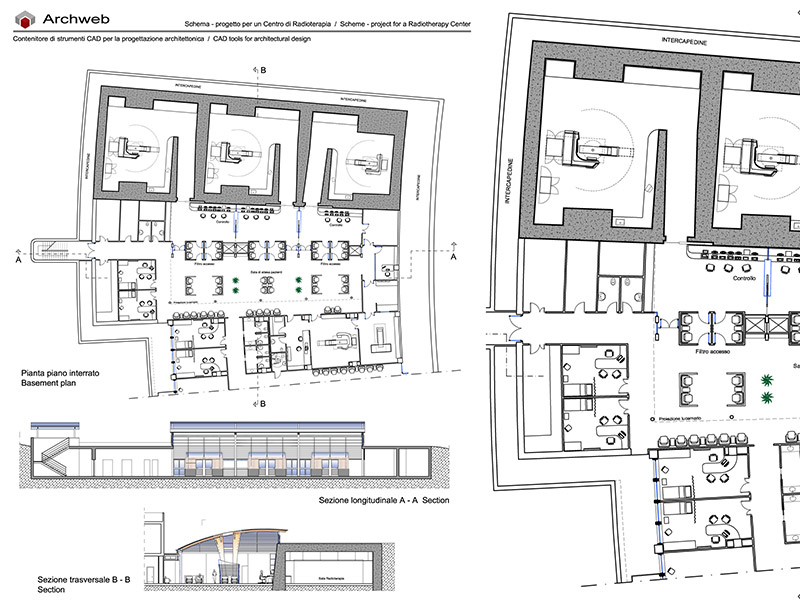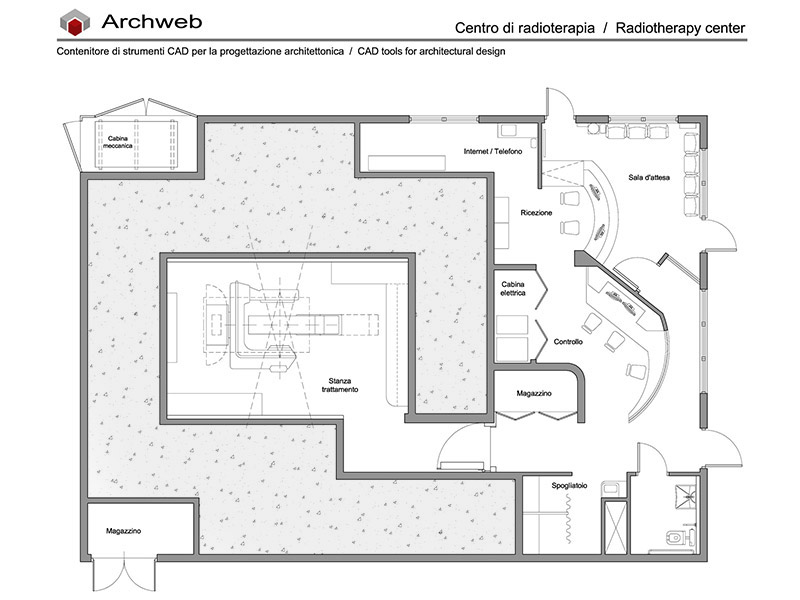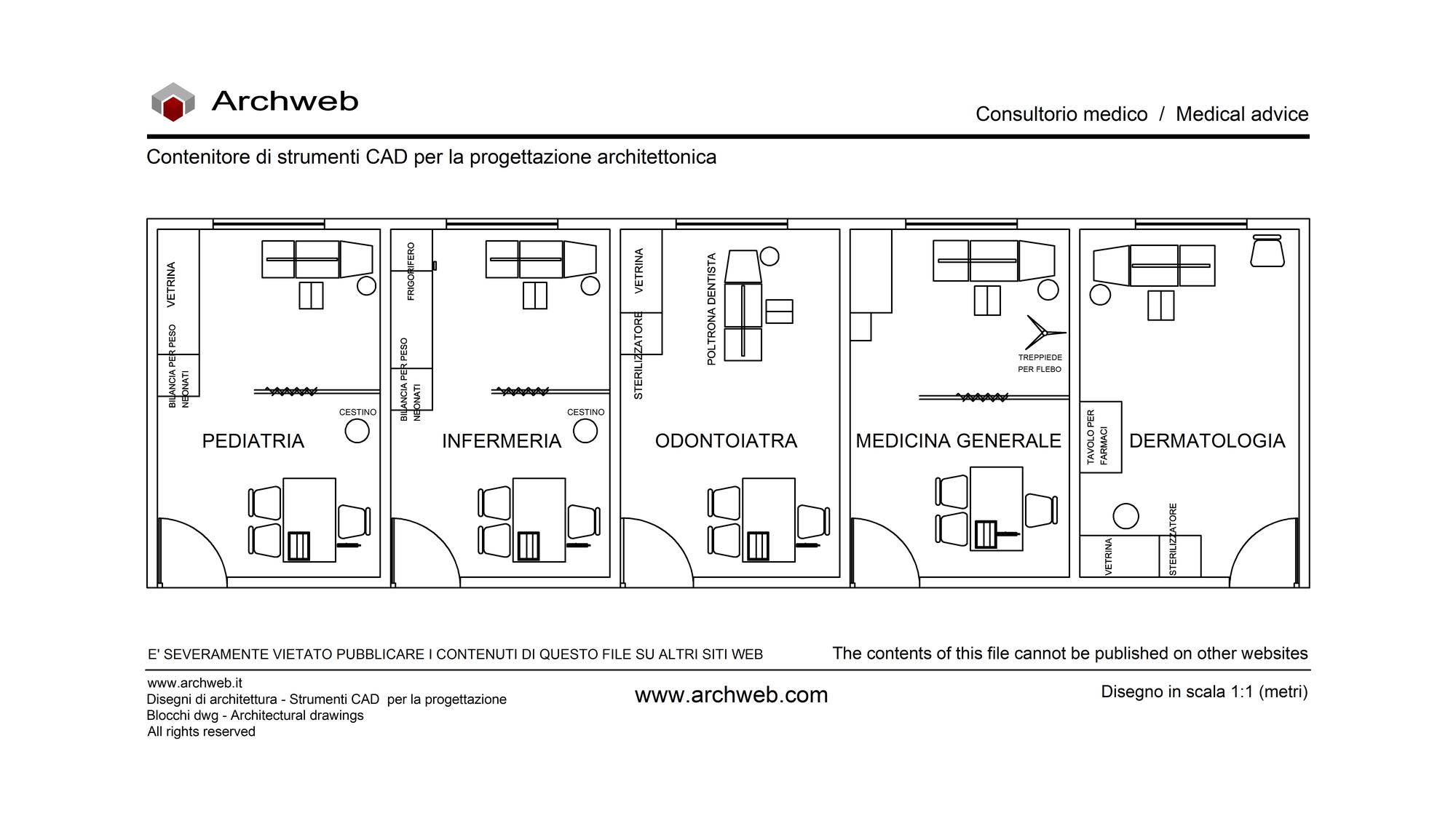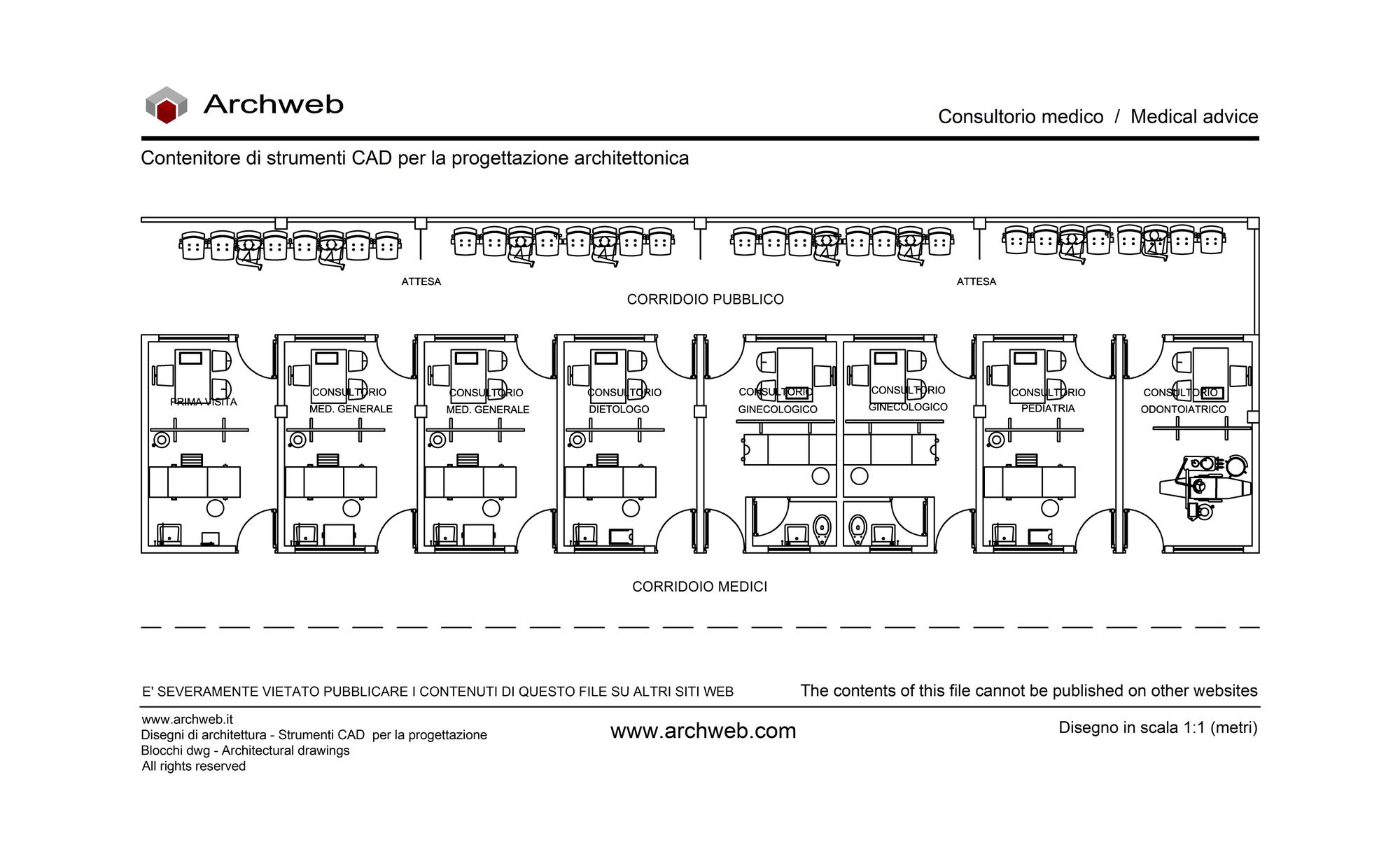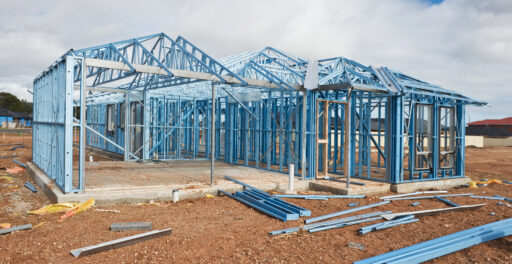Radiotherapy Centre
Features, functions, design guidelines

Radiotherapy centres are facilities dedicated to the treatment of cancer using ionising radiation. Their design must meet strict criteria to ensure maximum safety and effectiveness of treatments, as well as the comfort and well-being of patients.
In this article, we will take an in-depth look at the characteristics and functions of Radiotherapy Centres, analysing the main guidelines to follow for optimal design.
Radiotherapy Centre: features, functions and services
Radiotherapy centres are of crucial importance in the management of cancer, as they offer targeted and customised treatments for patients. Thanks to technological advances and the skills of highly qualified staff, these centres are able to deliver extremely precise therapies, minimising side effects and maximising treatment efficacy. Their widespread presence throughout the territory guarantees accessibility to treatment for all patients who need it.
Features
A radiotherapy centre of excellence is characterised by a number of key features:
- Comfortable environments. Facilities must provide a welcoming and reassuring environment for patients, with adequate space for waiting, treatment and recovery.
- State-of-the-art technology. The centre must be equipped with state-of-the-art equipment, such as linear accelerators, advanced imaging systems and computerised treatment planning systems, to ensure maximum precision and safety.
- Highly qualified staff. The centre must have a team of highly specialised professionals, such as radiotherapy physicians, medical physicists, nurses and technicians, capable of providing comprehensive, quality care.
- Safety protocols. Strict safety protocols for handling ionising radiation must be implemented to protect the health of patients and operators.
- Integration with other health services. The centre must be integrated with other hospital departments and support services, such as oncology, surgery and rehabilitation, to offer a multidisciplinary approach to patient care.
Functions and services offered
Radiotherapy centres perform a wide range of functions and offer a number of essential services for cancer treatment:
- Assessment and diagnosis. Patients undergo a thorough evaluation to determine the type and stage of the disease in order to plan the most appropriate treatment.
- Treatment planning. Medical physicists and radiotherapists work together to develop a customised treatment plan, using advanced imaging techniques and computerised planning systems.
- Therapy delivery. Patients receive radiotherapy treatment, with the aim of destroying cancer cells and preserving surrounding healthy tissue as much as possible.
- Monitoring and follow-up. Patients undergo regular checks and evaluations during and after treatment to monitor the effectiveness of the therapy and manage any side effects.
- Support and care. Radiotherapy centres also offer psychological, nutritional and social support services for patients and their families to improve their quality of life during treatment.
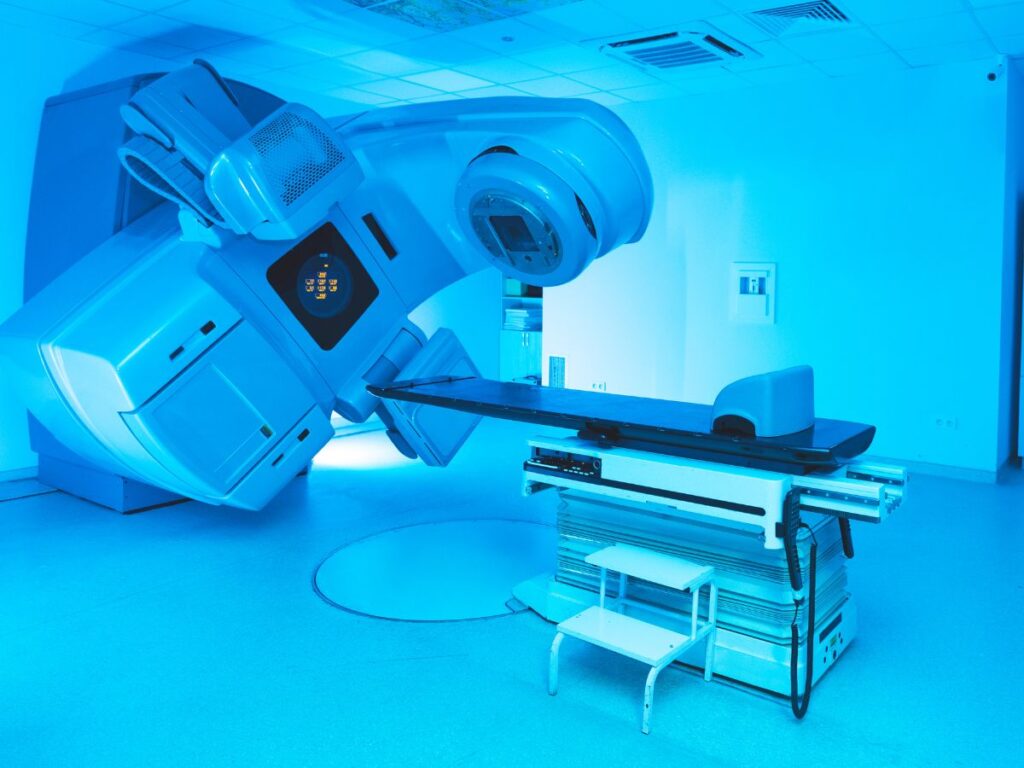
Guidelines for the design of a radiotherapy centre
The design of a radiotherapy centre is a complex process that must take into account numerous variables in order to ensure maximum safety and effectiveness of treatments, as well as the comfort and well-being of patients.
Security
- Radiation protection. The basic requirement is radiological safety, which is achieved through adequate shielding of treatment areas, implementation of strict working protocols and continuous staff training.
- Fire prevention. Adequate fire prevention measures are essential to protect the facility and its occupants in the event of a fire.
- Electrical safety. Electrical installations that comply with current regulations are necessary to ensure the safety of patients and workers.
Functionality
- Efficient layout. The layout of the centre should optimise the workflow, minimising waiting times for patients and facilitating the work of staff.
- Dedicated areas. Adequate space must be provided for the different functions of the centre, such as:
- Bunker. Shielded room housing the particle accelerator.
- Treatment areas. Where patients receive radiotherapy.
- Planning rooms. Where the individual treatment plan is defined for each patient.
- Control areas. For monitoring equipment and managing patient data.
- Reception areas. For waiting patients and psychological support.
- Changing rooms and toilets. To guarantee the comfort and privacy of patients.
- Technological equipment. The centre must be equipped with state-of-the-art electro-medical equipment and an efficient computer system for patient data management.
Comfort
- Cosy environments. Spaces in a radiotherapy centre must be designed to reduce patients’ stress by creating a relaxing and comfortable atmosphere.
- Adequate lighting. It is important to ensure optimal lighting in all areas of the centre, both for functional reasons and for the well-being of patients.
- Noise control: Measures must be taken to minimise noise within the centre, particularly in the treatment areas.
Accessibility
- Architectural barriers. The centre must be accessible to all patients, including those with reduced mobility.
- Clear signage. There must be clear and intuitive signage to facilitate patient orientation within the centre.
- Support services. Support services must be available for patients with special needs, such as assisted transport or interpretation.
Flexibility
- Modular design. The design must be modular in order to be able to adapt to future needs and technological developments.
- Adaptable spaces. Some spaces should be designed to be easily adaptable to different functions in order to meet future needs.
Rules and Regulations
- Regulatory requirements. The design of a radiotherapy centre must comply with all applicable safety, radiation protection, accessibility and fire prevention regulations.
- Guidelines. There are specific guidelines published by relevant bodies, such as the Istituto Superiore di Sanità (ISS) in Italy, which provide detailed guidance for the design, construction and operation of radiotherapy centres.
In addition to these general guidelines, it is important to consider the specific needs of one’s local situation and the catchment area of the centre. The collaboration of a team of qualified professionals, including architects, engineers, medical physicists, oncologists and radiotherapists, is essential for the realisation of an efficient, safe and comfortable radiotherapy centre for all patients.
Advanced technologies used in radiotherapy centres
Radiotherapy centres of excellence use state-of-the-art technology to offer increasingly precise and customised treatments:
- Linear accelerators. These devices generate high-energy radiation beams to destroy cancer cells.
- Advanced imaging systems. Technologies such as computed tomography (CT), magnetic resonance imaging (MRI) and positron emission tomography (PET) enable more accurate treatment planning.
- Treatment planning systems. Sophisticated calculation and simulation software make it possible to optimise radiation distribution and minimise side effects.
- Conformal radiotherapy techniques. Methods such as intensity-modulated radiotherapy (IMRT) and stereotactic radiotherapy (SBRT) allow the radiation beam to be conformed to the shape of the tumour, sparing healthy tissue as much as possible.

Qualifications and staff training in a radiotherapy centre
The staff of an excellent radiotherapy centre must possess highly specialised skills:
- Radiation physicians. Doctors specialising in the use of ionising radiation for the treatment of cancer.
- Medical physicists. Professionals experienced in planning and controlling radiotherapy treatments.
- Radiotherapy technicians. Professionals specialised in the use of equipment and the delivery of treatments.
- Nurses: Professionals who provide care and support to patients during the course of treatment.
All personnel must follow continuous training programmes to maintain and update their skills, thus ensuring the highest quality and safety of the services offered.
Benefits of radiotherapy in cancer treatment
Radiotherapy has proven to be an extremely effective therapy in the fight against cancer, offering numerous benefits:
- Highly effective. Radiotherapy can destroy cancer cells in a targeted manner, with success rates comparable to or higher than other therapies.
- Organ preservation. Conformational radiotherapy techniques allow healthy tissue surrounding the tumour to be spared as much as possible.
- Reduction of side effects. Modern radiotherapy treatments are able to minimise side effects, improving patients’ quality of life.
- Multidisciplinary treatment. Radiotherapy can be integrated with other therapies, such as surgery and chemotherapy, for a more comprehensive approach to cancer treatment.
- Accessibility to treatment. The widespread presence of radiotherapy centres throughout the territory guarantees access to treatment for all patients who need it.
Socio-economic impact of radiotherapy centres in the community
In addition to clinical benefits, radiotherapy centres have a significant socio-economic impact on the community:
- Employment and economic development. These centres create skilled jobs and contribute to local economic development.
- Improved quality of life. Access to radiotherapy treatment improves the health and well-being of patients, with positive effects on their lives and work.
- Reduced healthcare costs. Radiotherapy treatments, if properly planned and delivered, can help to contain health system costs in the long term.
- Role in research and innovation. Radiotherapy centres play a key role in the development of new technologies and clinical research, promoting the advancement of medicine.
Conclusion: the importance of radiotherapy centres for public health
In conclusion, radiotherapy centres are an essential element of public health, offering highly effective, state-of-the-art treatments to fight cancer. Thanks to their outstanding features, advanced technologies and highly qualified staff, these centres play a key role in the fight against the disease, improving the quality of life of patients and having a significant socio-economic impact on the community.
Cover photo: Jo McNamara from Pexels






























































